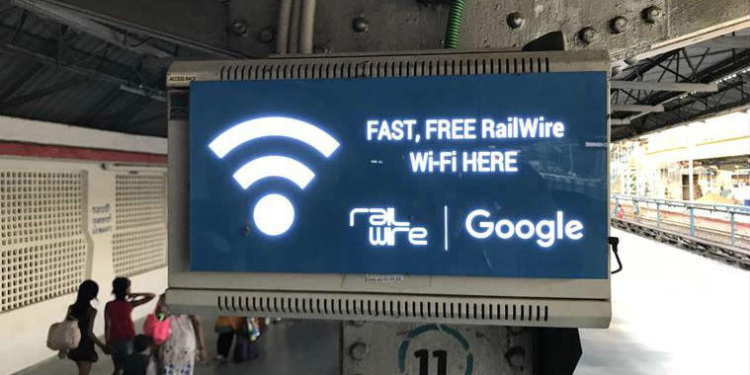In the last four years of Modi government, Digitalization happened in India at the fastest pace seen anywhere in the world in any period of time. For mobile data to WiFi and even broadband connections expanded at an exponential pace. Railway ministry was at the forefront of using telecom revolution to provide better services to the people of the country. Indian Railways has turned 1,600 railway stations in to RailWire WiFi zone. Santacruz railway station at the western line of Mumbai became 1600th station to get the WiFi service. RailTel, a fully owned company of Indian Railways, has been given the task to connect railway station through high speed broadband network.
“In order to fulfil the promise of bringing fast and free Wi-Fi at all stations (except the halt stations) within a year, team RailTel is tirelessly working to achieve the target and in this process, WR’s Santacruz station became the 1600th railway station of the Indian Railway which has now been equipped with RailWire Wi-Fi connectivity,” said the Western Railway in a statement.
The Railwire WiFi service launched in 2016 provides free internet at railway stations with the help of RailTel Corporation of India Ltd. RailTel aims to provide free WiFi facility in urban as well as rural railway station to bridge the digital divide. “RailTel has provided high speed Wi-Fi at 985 stations with own/other funding and at 415 A, A1 and C category stations, associating Google as the technology partner for radio access, while using the RailTel backbone for broadband connectivity. RailTel has also completed work of providing Wi-Fi to 200 stations with support of Universal Service Obligatory Fund of GoI,” said RailTel CMD Puneet Chawla. Indian Railways have set a target of making all 8,500 stations in India WiFi enabled.
Under the ‘Digital India’ initiative, many programmes were launched by the Modi government to provide Internet connection to every village and possibly every household. The optical fiber network in villages was almost negligible. As of December 2018, half of the gram panchayats are connected by an optical fiber network. The number of Common Service Centers (CSC), which provides e-services to the rural and remote location was less than one lakh when Modi government came to power and the number increased more than 3 lakhs as of this year. The prices for internet connection crashed since the entry of Jio. Today India has one of the cheapest internet tariffs in the world.
A report published by McKinsey & Company, the largest and most prestigious management consultancy firm, declared India as the second fastest digitizing economy in the world. The report prepared by McKinsey Global Institute is titled as ‘Digital India: Technology to transform a connected nation’ and it said that “Indian consumers have strongly embraced digital technologies. Now India’s companies must follow suit.”
The digital economy would create 6 crore jobs in various sectors like construction, manufacturing, agriculture, trade, hospitality, finance, media and logistics by 2025. The explosive rise in internet users will drive the digital economy. As of now core digital sectors contribute 170 billion dollars or 7 percent of total GDP with 115 billion from IT-BPM, 45 billion from digital communications, and 10 billion from electronics manufacturing. The size of the industry would increase to somewhere between 355 billion dollars to 435 billion dollars or 8 to 10 percent of country’s GDP by 2025. According to report, “value-added contribution in 2025 could range from $205 billion to $250 billion for IT-BPM, from $100 billion to $130 billion for electronics manufacturing, and $50 billion to $55 billion for digital communications.”
The great leap forward by the digital sector is a result of the public as well as private sector efforts. The foundation for the growth of the digital sector has been laid and its growth will help the Indian economy to achieve double-digit growth.































